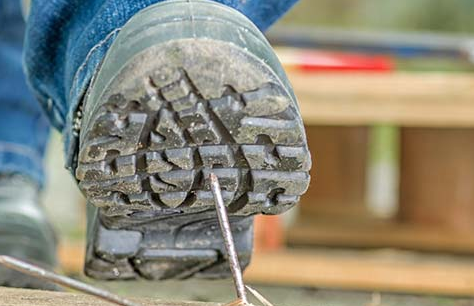A 10 year-old boy steps on a nail while wearing sneakers. Would you initiate prophylactic antibiotics with Pseudomonas coverage?
It’s a good question. Much like this one:

Plantar puncture wounds are common and the anatomy of the foot makes it an excellent environment for infection to rapidly spread. Puncture wounds in particular can inoculate bacteria deep into the soft tissues.
The lack of data makes it difficult to offer recommendations on antibiotic therapy and duration. There are no real studies comparing outcomes in patients who receive antibiotics for puncture wounds vs those who don’t. Thus, as per UptoDate: “the decision to administer antibiotics in high-risk patients is left to the discretion of the treating clinician”. If the wound is less than 24 hours old and there is no risk factor for an infected wound (gross contamination, immunosuppression, etc), then local wound care and good return precautions are probably adequate. If the wound is over 24 hours old and there is concern for infection, it’s a good idea to start antibiotics. Ciprofloxacin is typically recommended as empiric antibiotic coverage for this type of injury. However, we have also been taught to avoid fluoroquinolones in children due to the risk of arthropathy. In fact, currently, fluoroquinolones are only FDA-approved in individuals less than 18 years of age for complicated UTI and for treatment of inhalation anthrax. However, while fluoroquinolones can lead to adverse musculoskeletal events, it is typically transient. Tendinopathy is more likely to occur in older patients, patients taking corticosteroids, and patients with renal disease. If antibiotics are prescribed, you’re safe to go with something like cephalexin for plantar puncture wounds in which the patient was barefoot. If footwear is involved, then the concern for potential Pseudomonas infection warrants a 3-5 day course of fluoroquinolones. Summary: Evaluate the wound with a high index of suspicion for retained foreign bodies. X-rays can be helpful. Update tetanus status. Irrigate and cleanse the wound. Engage in shared decision-making with the patient: weigh the risk/benefit and decide on prophylactic antibiotic coverage. If you enjoyed this post, find more just like it in this handy book of advice for those that work in the Emergency Room:




